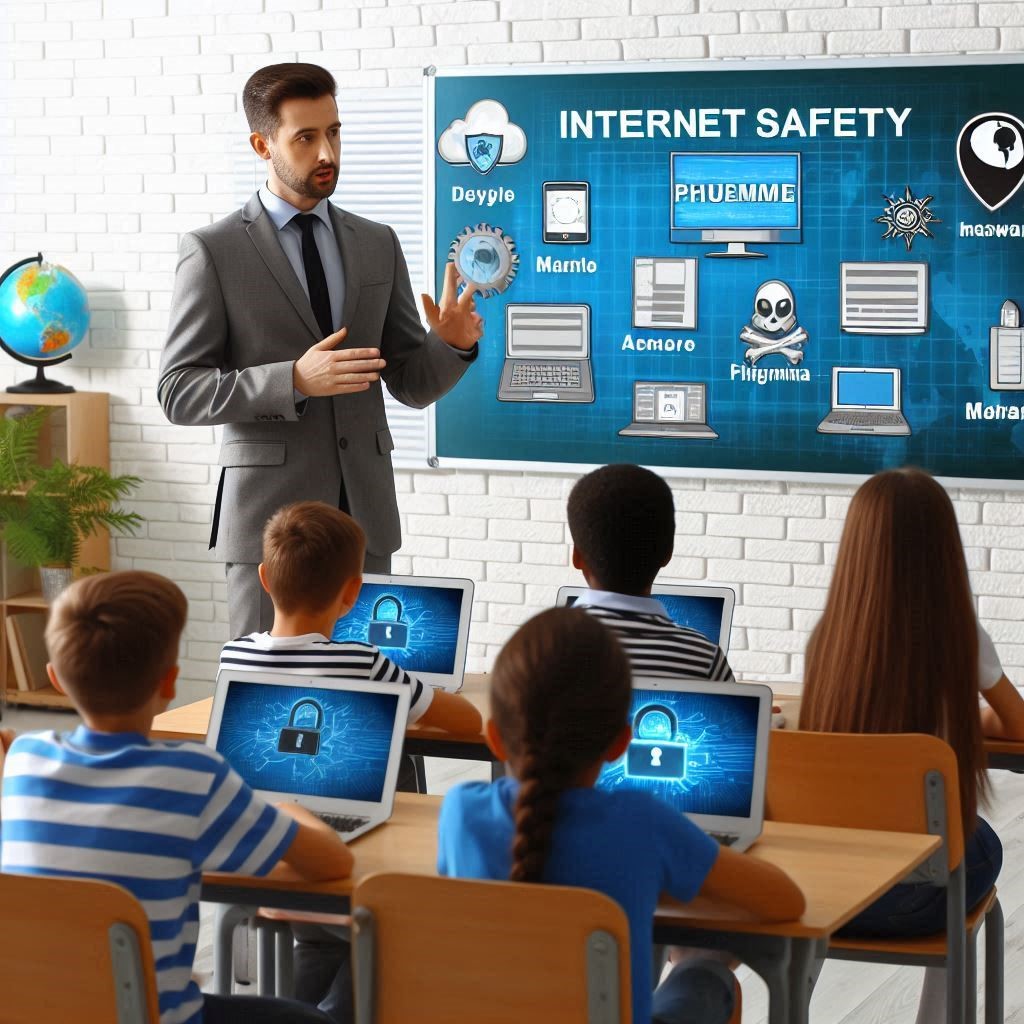Year 7 - Fundamental Computer Skills

In Year 7, we focus on teaching essential IT skills that are applicable across all subjects, while also preparing students for the computing curriculum. Throughout the year, we cover five units of assessed work, which are detailed below:
Unit 1 – File Management
Navigating Network: Students will learn the basics of file management, including creating, organising, and maintaining folders and files on a computer and network. They will understand how to save, retrieve, and move files within a networked environment.
Google Classroom / Teams: Introduction to using platforms like Google Classroom and Microsoft Teams for educational purposes. Students will learn to join classes, submit assignments, communicate with teachers and classmates, and manage their coursework.
Searching Skills: Development of effective internet search strategies to find reliable information quickly. This includes using search engines, understanding search results, and evaluating the credibility of sources.
Unit 2 – Personal Online Safety
What Information Should We Reveal in What Contexts: Students will learn about the types of personal information that should and shouldn't be shared online, understanding the context in which different information is appropriate to reveal.
Online Privacy Features: Exploring privacy settings on various online platforms and understanding how to use them to protect personal information. This includes adjusting privacy settings on social media, managing cookies, and using private browsing modes.
Consequences of Poor Online Safety: Discussion on the potential risks and consequences of poor online safety practices, such as identity theft, cyberbullying, and personal information leaks. Real-world examples will be used to illustrate these points.
Unit 3 – Components & Function of Computers
Introduction to Binary: Basic introduction to the binary number system, how it represents data in computers, and its importance in computing.
Basic Overview of the Components of a Computer: Students will learn about the main components of a computer, including the CPU, RAM, hard drive, motherboard, and peripherals. They will understand the function of each component and how they work together to make a computer operate.
Unit 4 – Introduction to Graphics
Basic Drawing Tools: Introduction to basic digital drawing tools and software. Students will learn to use tools such as brushes, shapes, and layers to create simple drawings.
Pixel Art: Learning the fundamentals of pixel art, where students create images pixel by pixel. They will understand concepts like resolution, colour palettes, and shading techniques.
Icons – Logos: Exploration of the design principles behind icons and logos. Students will create their own simple icons and logos, learning about symbolism, simplicity, and scalability.
Case Studies of App Icons and Company Logos: Analysis of various app icons and company logos, discussing the cultural and ethical considerations in their design. Introduction to bit depth and how it affects image quality and file size.
Unit 5 – Data Security and Online Security
Phishing / Scams: Students will learn about phishing attacks and scams, how to recognize them, and strategies to avoid falling victim to them. This includes identifying suspicious emails, messages, and websites.
Malware: Understanding different types of malware, including viruses, trojans, and spyware. Students will learn how malware spreads and the importance of anti-malware software.
Password Security: Best practices for creating and managing strong passwords. Students will understand the importance of unique passwords for different accounts and the use of password managers.
Recognising Scams / Malware: Developing skills to recognize various scams and malware in different contexts, such as emails, websites, and social media.
Recognising Threats in Different Contexts: Training students to identify potential security threats in various online scenarios and environments, understanding how to respond appropriately.
Unit 6 – Flowhcarts and Algorithms
Problem Solving: Using flowcharts as a tool for problem-solving. Students will learn to break down complex problems into smaller, manageable steps and represent them visually.
Paired Work: Encouraging collaboration by having students work in pairs to create flowcharts. This helps develop communication and teamwork skills.
Understanding FlowChart Symbols : Learning the standard symbols used in flowcharts, such as process, decision, start/end, and input/output. Students will understand how to use these symbols to create clear and logical flowcharts.
Logic Gates: Introduction to basic logic gates (AND, OR, NOT) and their representation in flowcharts. Students will learn how logic gates are used in computing to perform simple decision-making processes.